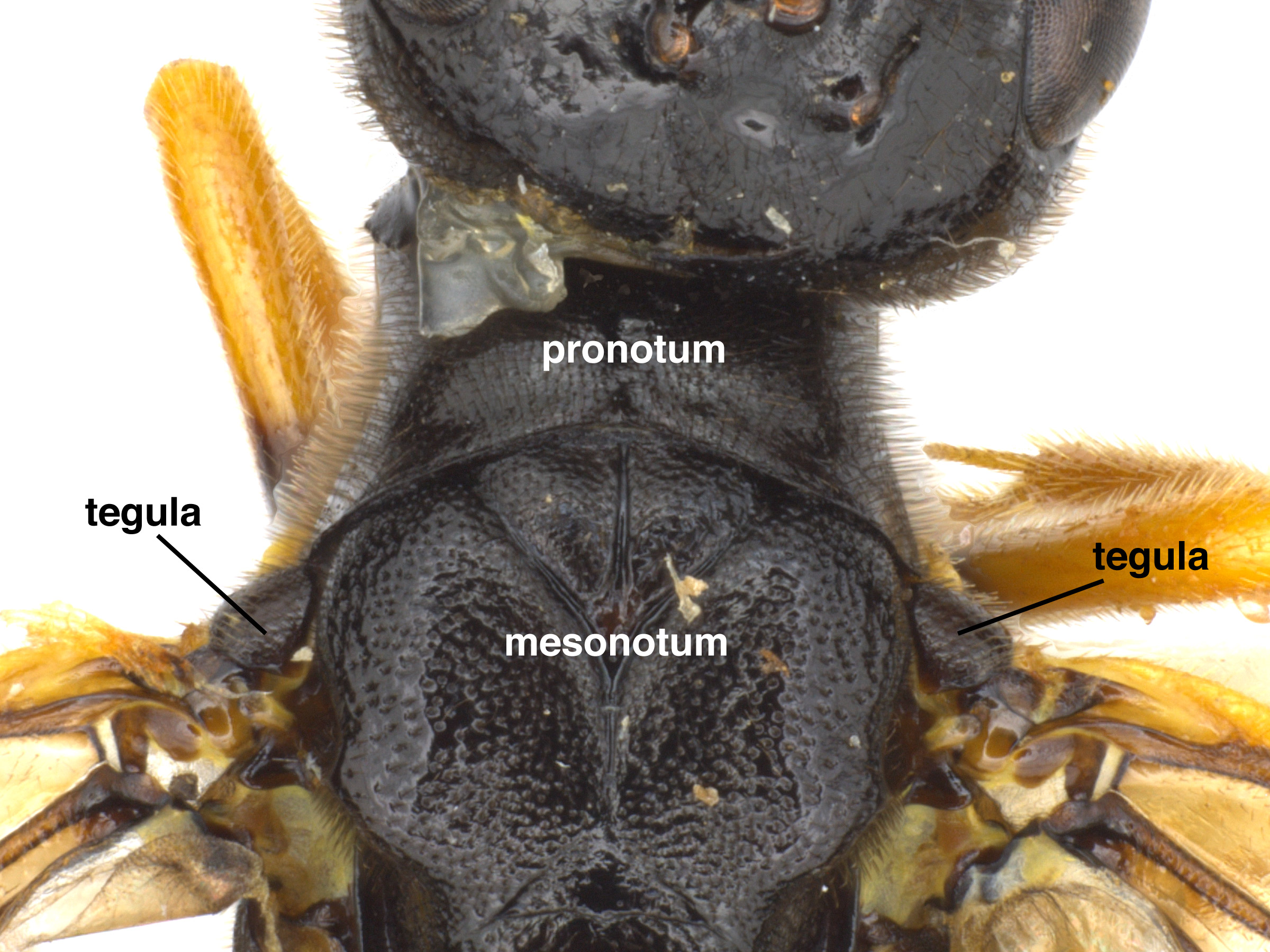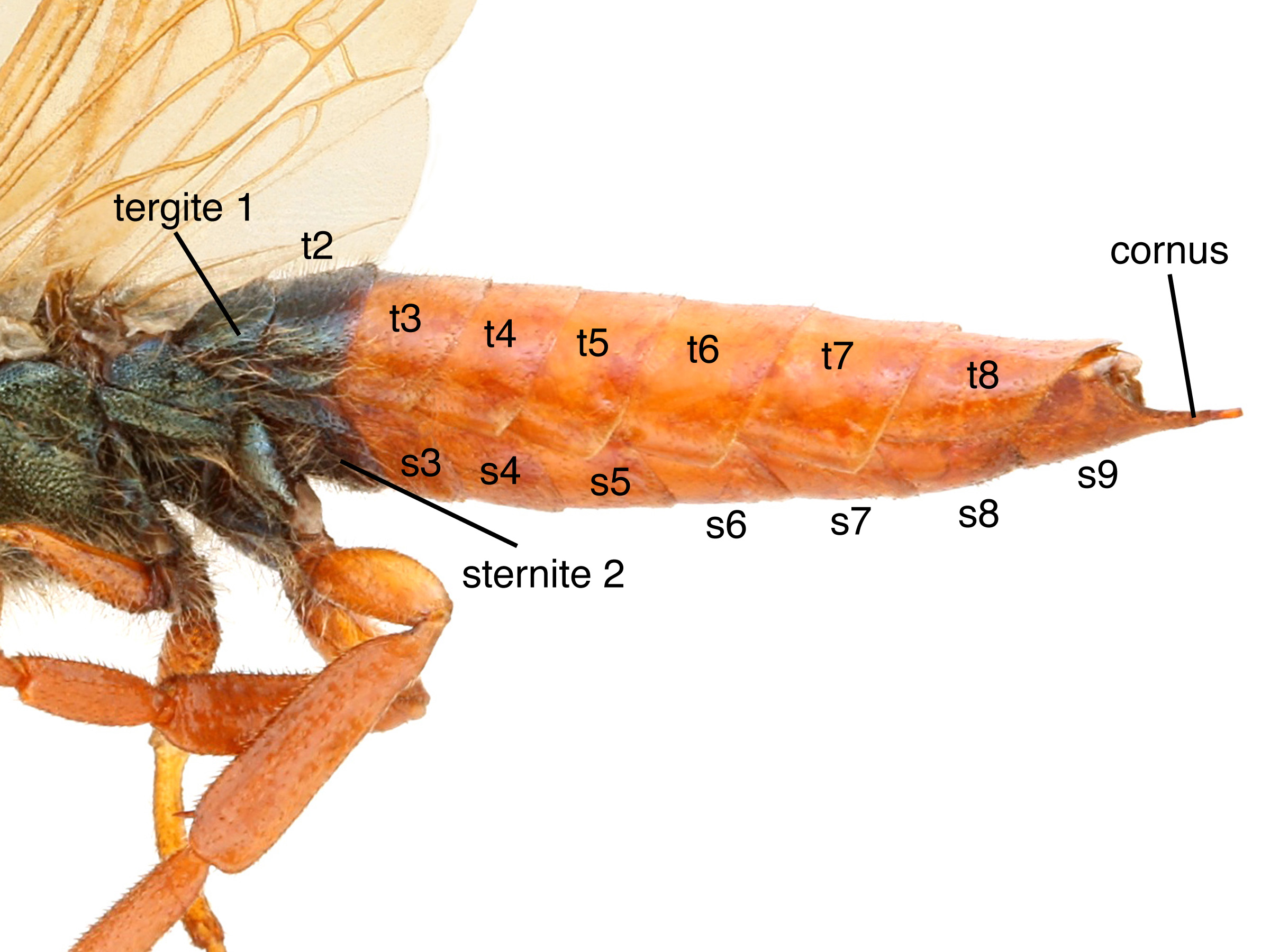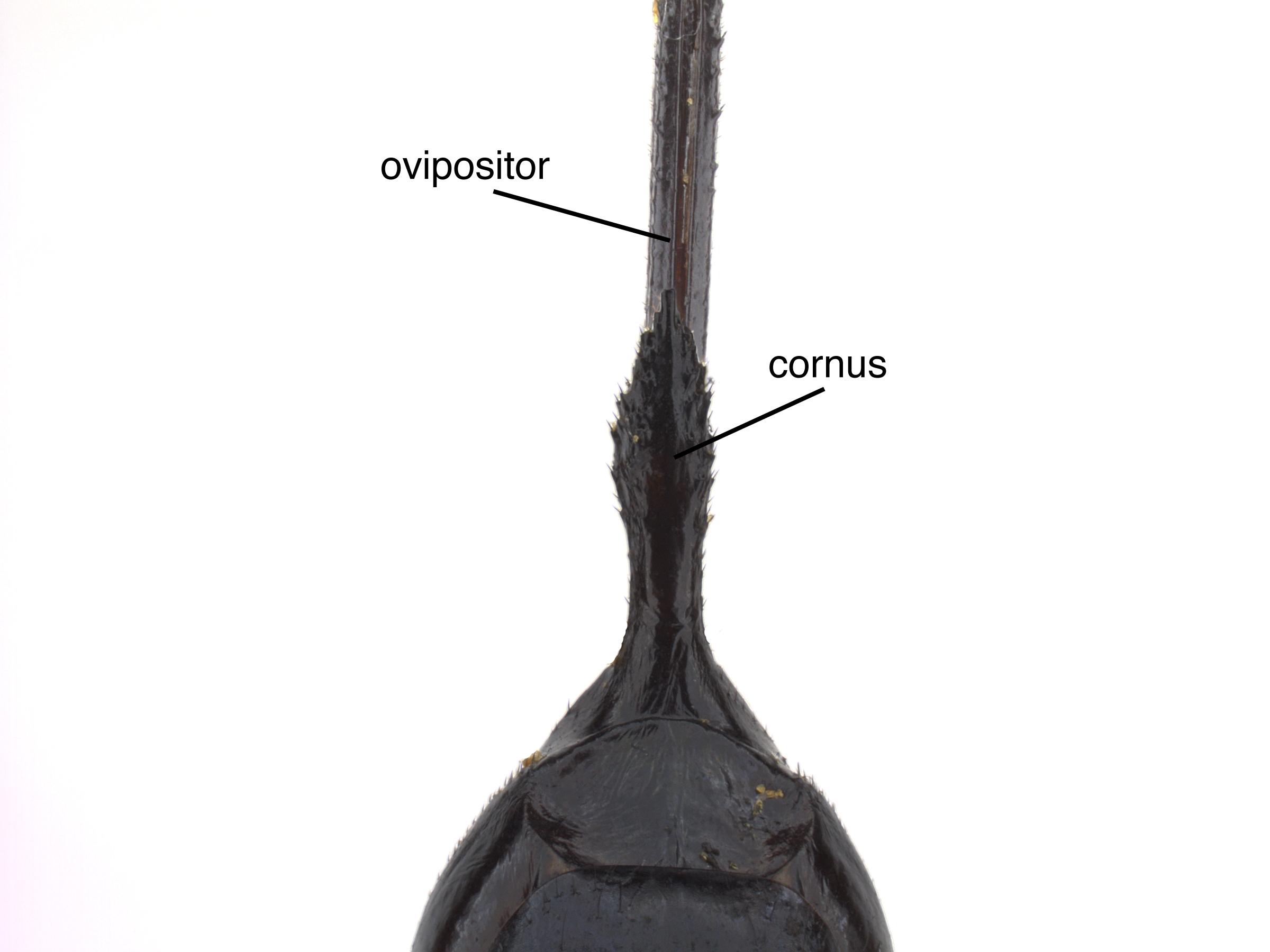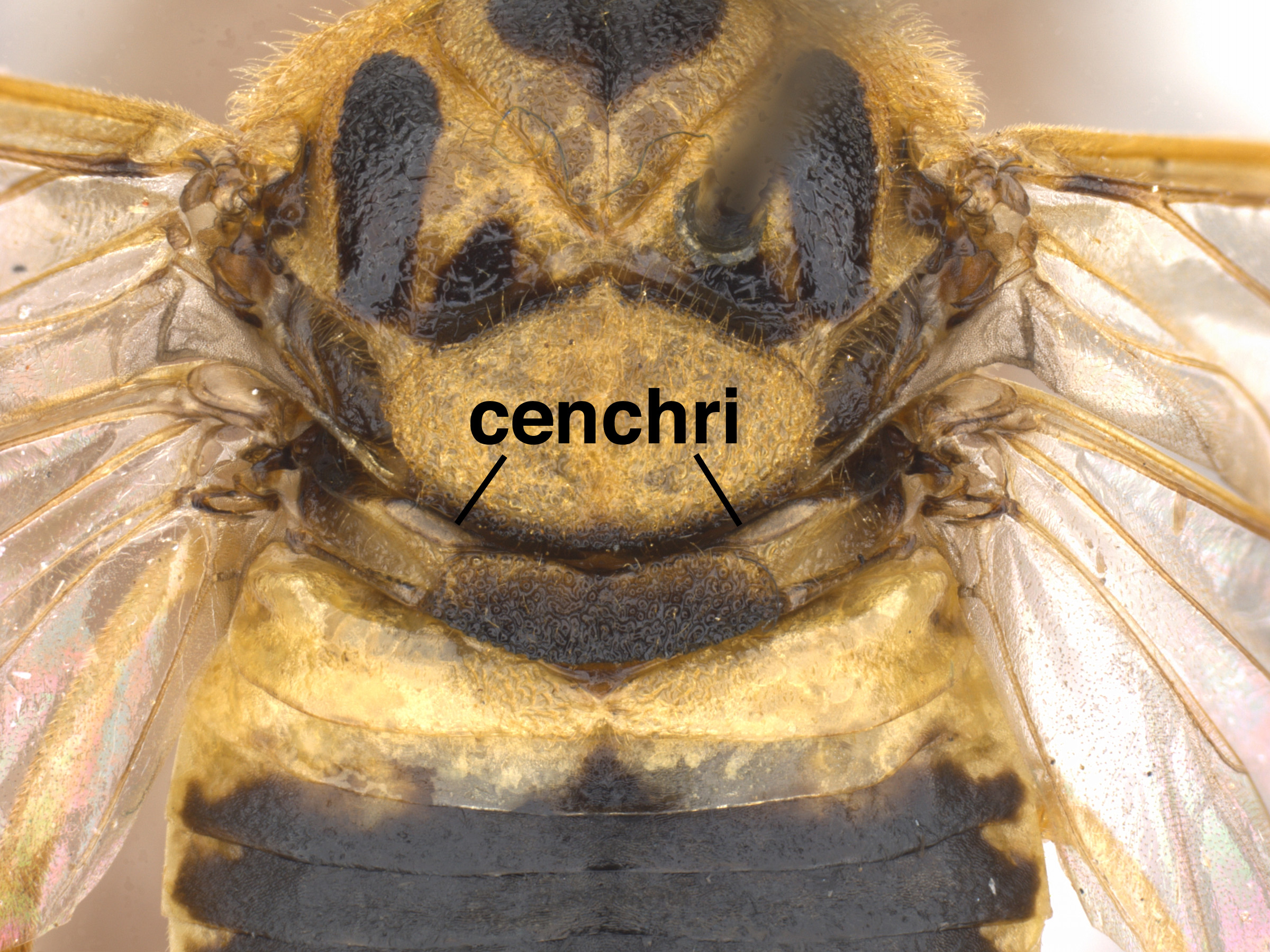Superfamily: Anaxyleoidea
Family: Anaxyelidae
Family common name: incense cedar wood wasps
Subfamilies: Anaxyelinae, Dolichostigmatinae, Syntexinae
The family Anaxyelidae is represented in North America by a single species, Syntexis libocedrii. This rare species has a small range and few host plants, and is known for an association with recently burned forest areas (Smith and Middlekauff 1987Smith and Middlekauff 1987:
Smith DR and Middlekauff WW. 1987. Suborder Symphyta. In: Stehr FW ed. Immature Insects. Kendall/Hunt Publishing Company. Vol. 1: 754 pp.).
Anaxyelidae includes only a single extantextant:
in existence; opposite of extinct
species, and it is NearcticNearctic:
describing the region of the Northern Hemisphere that includes North America south through northern Mexico
 . The family includes 33 fossil species (Taeger et al. 2018Taeger et al. 2018:
. The family includes 33 fossil species (Taeger et al. 2018Taeger et al. 2018:
Taeger A, Liston AD, Prous M, Groll EK, Gehroldt T, and Blank SM. 2018. ECatSymmdash;Electronic World Catalog of Symphyta (Insecta, Hymenoptera). Program version 5.0 (19 Dec 2018), data version 40 (23 Sep 2018). Senckenberg Deutsches Entomologisches Institut (SDEI), Muuml;ncheberg. https://sdei.de/ecatsym/ Accessed: 28 Jan 2020.).
 evenly sloped; not extremely constricted medially (Goulet 1992Goulet 1992:
evenly sloped; not extremely constricted medially (Goulet 1992Goulet 1992: short ventrally (Goulet 1992Goulet 1992:
short ventrally (Goulet 1992Goulet 1992: divided medially (Goulet 1992Goulet 1992:
divided medially (Goulet 1992Goulet 1992: not present; last tergitetergite:
not present; last tergitetergite: in female and last sternitesternite:
in female and last sternitesternite: in male rounded (Goulet 1992Goulet 1992:
in male rounded (Goulet 1992Goulet 1992: with 1 apicalapical:
with 1 apicalapical:Syntexis libocedrii is associated with species in the family Cupressaceae (Smith and Middlekauff 1987Smith and Middlekauff 1987:
Smith DR and Middlekauff WW. 1987. Suborder Symphyta. In: Stehr FW ed. Immature Insects. Kendall/Hunt Publishing Company. Vol. 1: 754 pp.).
Anaxyelidae can be distinguished from other families by the present cenchricenchrus:
a sclerotized eliptical lobe on the metascutum used to provide friction with underside of wings to hold them in place on the dorsum of the body while in rest
 , lack of cornuscornus:
, lack of cornuscornus:
a pointed horn-like process on the apical end of the abdomen in Siricidae sawflies; on tergite 10 in females, sternite 9 in males
 , and long cylindrical body (Goulet 1992Goulet 1992:
, and long cylindrical body (Goulet 1992Goulet 1992:
Goulet H. 1992. The genera and subgenera of the sawflies of Canada and Alaska: Hymenoptera. Symphyta. The insects and arachnids of Canada. Part 20. Agriculture Canada Publication.).
Syntexis libocedrii has been observed ovipositing into, and emerging from, recently burned trees following a forest fire. This appears to be a unique life history habit within sawflies (Smith and Middlekauff 1987Smith and Middlekauff 1987:
Smith DR and Middlekauff WW. 1987. Suborder Symphyta. In: Stehr FW ed. Immature Insects. Kendall/Hunt Publishing Company. Vol. 1: 754 pp.).
World: This family is known only from North America (Taeger et al. 2010Taeger et al. 2010:
Taeger A, Blank SM, and Liston AD. 2010. World Catalog of Symphyta (Hymenoptera). Zootaxa 2580: 1-1064.).
North America: Syntexis occurs in California, Oregon, and British Columbia (Goulet 1992Goulet 1992:
Goulet H. 1992. The genera and subgenera of the sawflies of Canada and Alaska: Hymenoptera. Symphyta. The insects and arachnids of Canada. Part 20. Agriculture Canada Publication.).